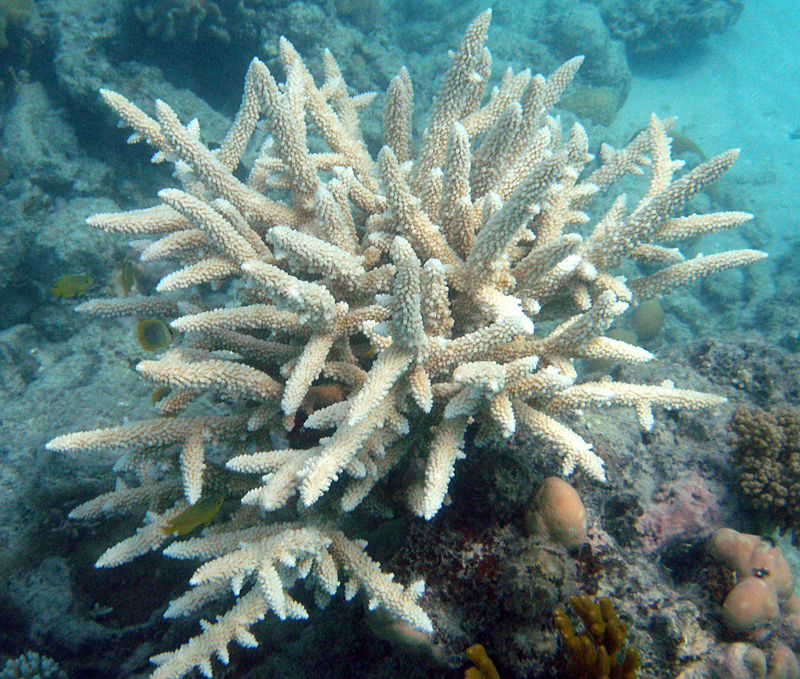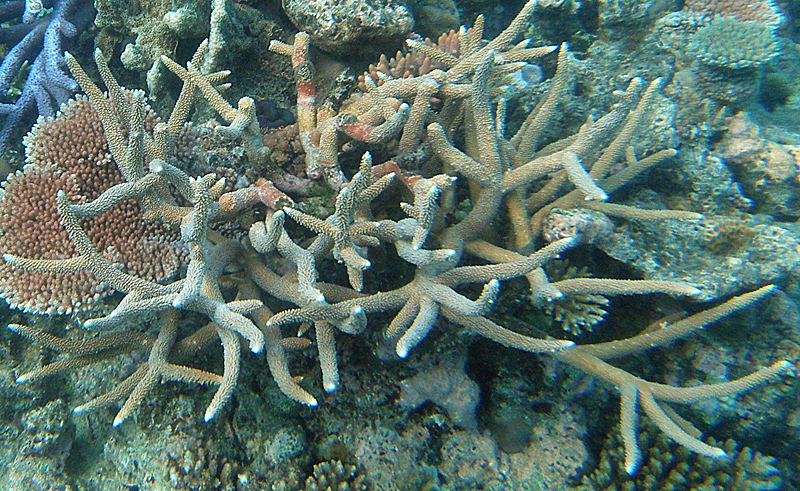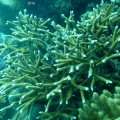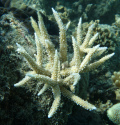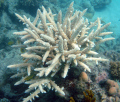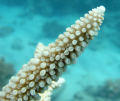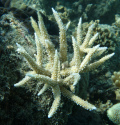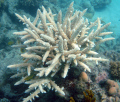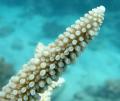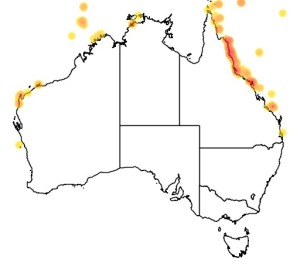�
�
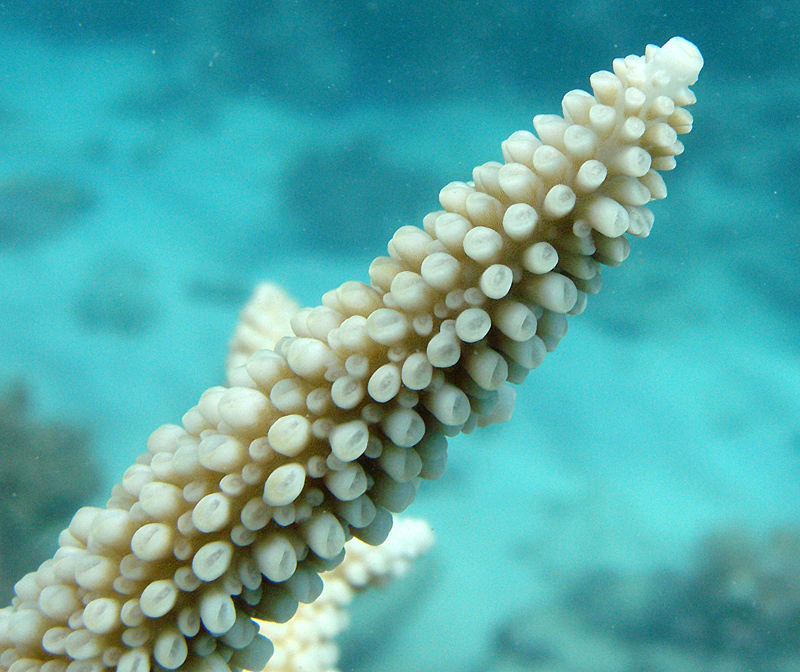
©Andy: Macro image of the previous colony of Acropora muricata showing the typical form of the Axial and radial corallites
�
���
Acropora muricata

©Andy: Macro image of the previous colony of Acropora muricata showing the typical form of the Axial and radial corallites
Kingdom
Animalia
Phylum
Cnidaria
Class
Anthozoa
Order
Scleractinia
Family
Acroporidae
Genus
Acropora
Species
Acropora muricata
Status
insufficient data to assess
Colours
Distinguishing features
This species has a staghorn morphology, with long tapering branches and an open growth form. The axial polyp is small and lightly coloured, while radial corallites are tubular and often seen in various sizes. Colours include cream, brown, and blue. Distinguish from Acropora intermedia which has rasp-like radial corallites.
Size
- Size data has not been obtained.
Synonyms
Similar taxa
Interesting facts
-
12 facts about poo
1.Corals eat fish poo, sea Cucumbers search for poo in the sand & unicornfish hang around under schools of predatory fish to feed on the poo that rains down.
2.Koalas feed their children poo.
3.Possums eat their own poo.
4.Doctors transplant poo from healthy people into the stomachs of people with certain illnesses (and it works 91-98% of the time).
5.Feather Stars can eat so fast that their poo (small crustaceans) is still alive and swims away having a new understanding on how precious life is.
6.Flatworms poo out of their mouth.
7.Scarab beetles are born inside of poo .
8.The Potato Beetle covers itself with poo (it has poisonous poo to deter predators).
9.Thrips poo out sugar (sap-sucking insects).
10.The largest pile of poo is so huge it can be seen from space (The Great Barrier Reef).
11.The Hoopoe bird uses Poo as a missile (squirting it in the eye of predators).
12.Poo is sexy (female salamanders taste poo to judge the quality of the male).
Distribution
Distribution and habitat preferences
Found in lagoons and back reef areas.
Behaviour
Like most Acroporidae, this species is a hermaphrodite broadcast spawner, releasing gametes shortly after dark in the few days after the full moon in the warmer months between November and February. It does not transfer zooxanthellae to the planula larvae however.
Web resources
References
- Anderson, K.D., N.E. Cantin, S.F. Heron, C. Pisapia and M.S. Pratchett (2017). Variation in growth rates of branching corals along Australia�s Great Barrier Reef, Scientific Reports, 7: 2920, DOI:10.1038/s41598-017-03085-1. LIRS catalog number 2132.
- Baird, A.H., J.R. Guest and B.L. Willis (2009). Systematic and biogeographical patterns in the reproductive biology of scleractinian corals, Annual Review of Ecology, Evolution and Systematics, 40: 551-571.
- Boyett, H.V. (2006). The ecology and microbiology of black band disease and brown band syndrome on the Great Barrier Reef, M.Sc. thesis, James Cook University. LIRS catalog number 969.
- View all references
